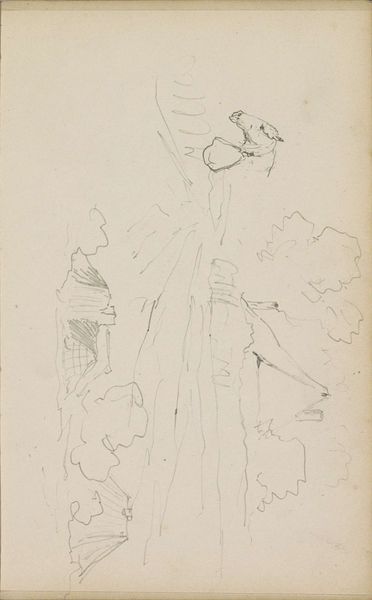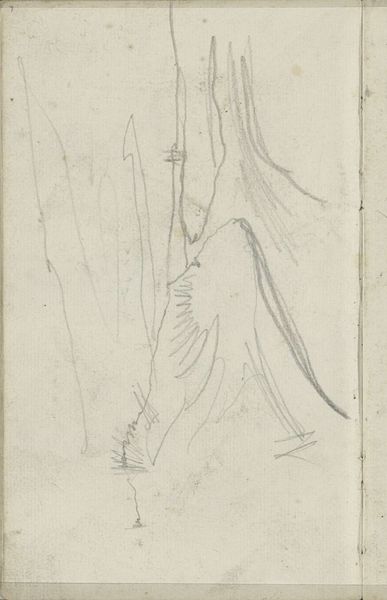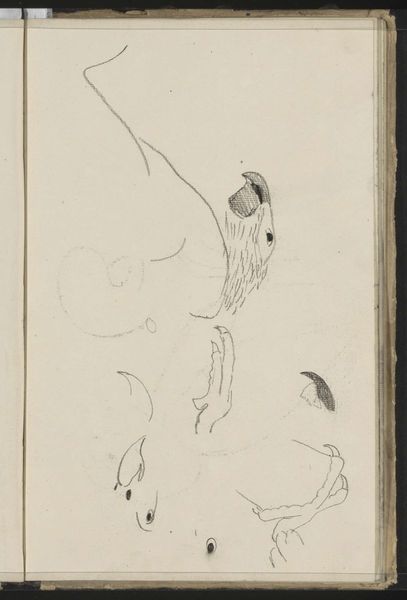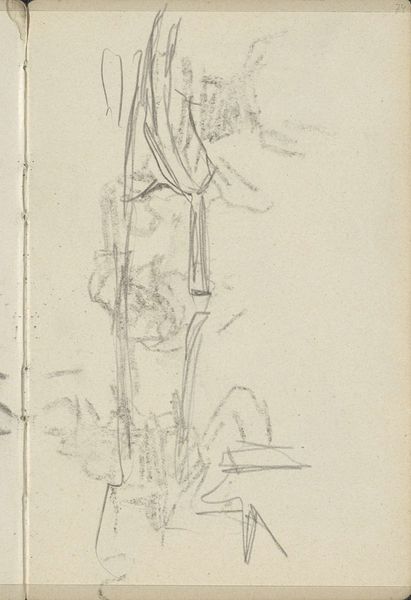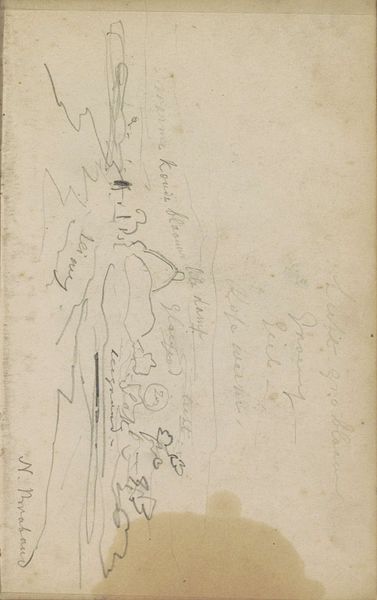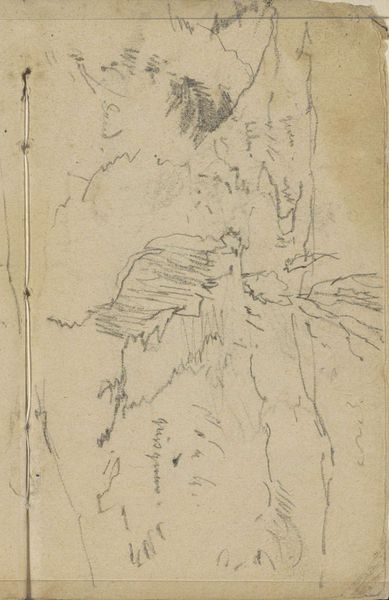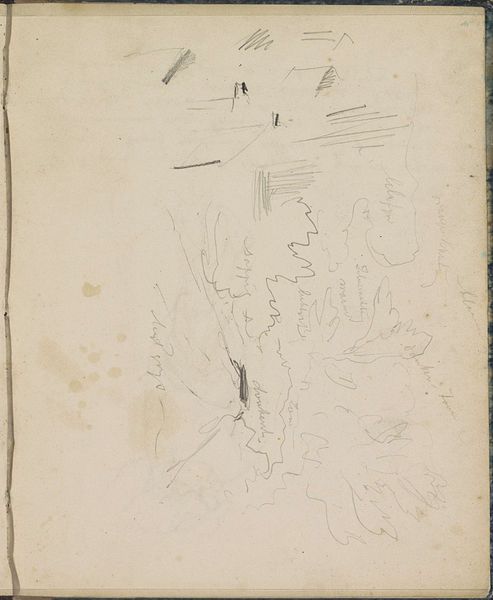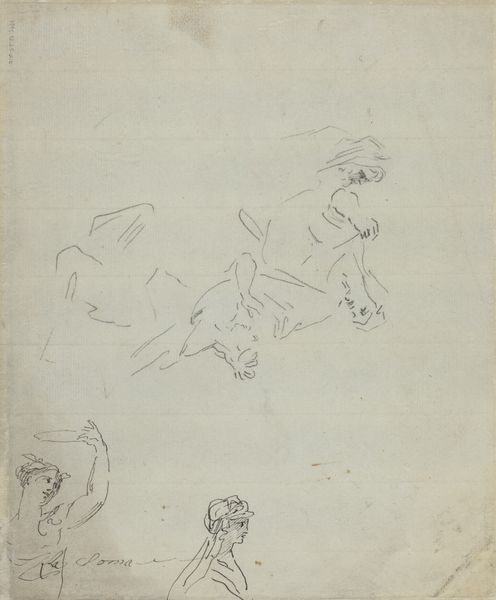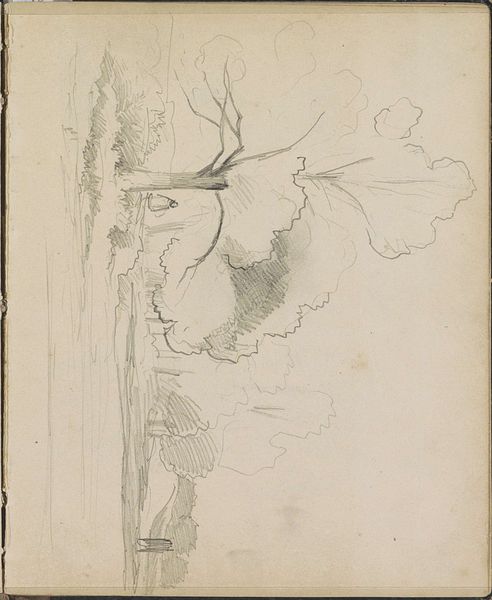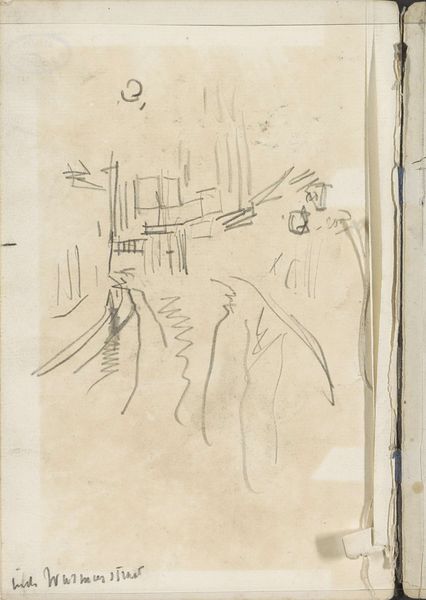
drawing, pencil
#
drawing
#
landscape
#
waterfall
#
pencil
Copyright: Rijks Museum: Open Domain
Curator: Here we have "Waterval," which translates to "Waterfall," a pencil drawing likely created between 1858 and 1859 by Johannes Tavenraat. It’s currently held in the Rijksmuseum. Editor: The energy in those rapid lines! It's almost frenetic. A stark, dynamic representation rendered in the most simple, common materials. Curator: It's fascinating to consider landscape art during this period, particularly in the context of burgeoning industrialization. Artists were drawn to both untouched nature and rapidly changing urban landscapes. I wonder how Tavenraat positioned himself relative to these conversations, or the legacy of landscape giants before him. Editor: To me, it screams of a particular kind of labor—not industrial, certainly, but the intense focus required to capture movement with such sparse means. Consider the physical act of mark-making, the specific pencils he used, the paper—it's all about the artist engaging with the raw potential of these materials. What drove the need to document these views at this time? Curator: The rise of tourism! Capturing and commodifying these scenic vistas became quite popular. Reproductions in prints circulated widely, contributing to ideas about national identity and ideal landscapes. Tavenraat was definitely riding a wave of this landscape fascination that was quite trendy. Editor: So it's not simply the beauty of the waterfall but the waterfall as a commodity? Interesting! The repetitive nature of the marks becomes then like a proto-industrial gesture; he’s mass-producing views of nature through these quickly rendered scenes. Almost feels that act mirrors some of the manufacturing coming into society at that time. Curator: Precisely! Even his choice to represent something as ephemeral as a waterfall in a reproducible format like pencil suggests a desire to possess and control nature in a very modern way. Thank you! Thinking about how tourism affected both what artists chose to capture and how is definitely something new I'm adding to the way I observe these landscapes. Editor: And, for me, the link between materials and labor reveals that behind this “simple” sketch, we may also uncover the complexities and socio-economics within Dutch art history. A reminder, perhaps, to delve beyond obvious interpretations!
Comments
No comments
Be the first to comment and join the conversation on the ultimate creative platform.
